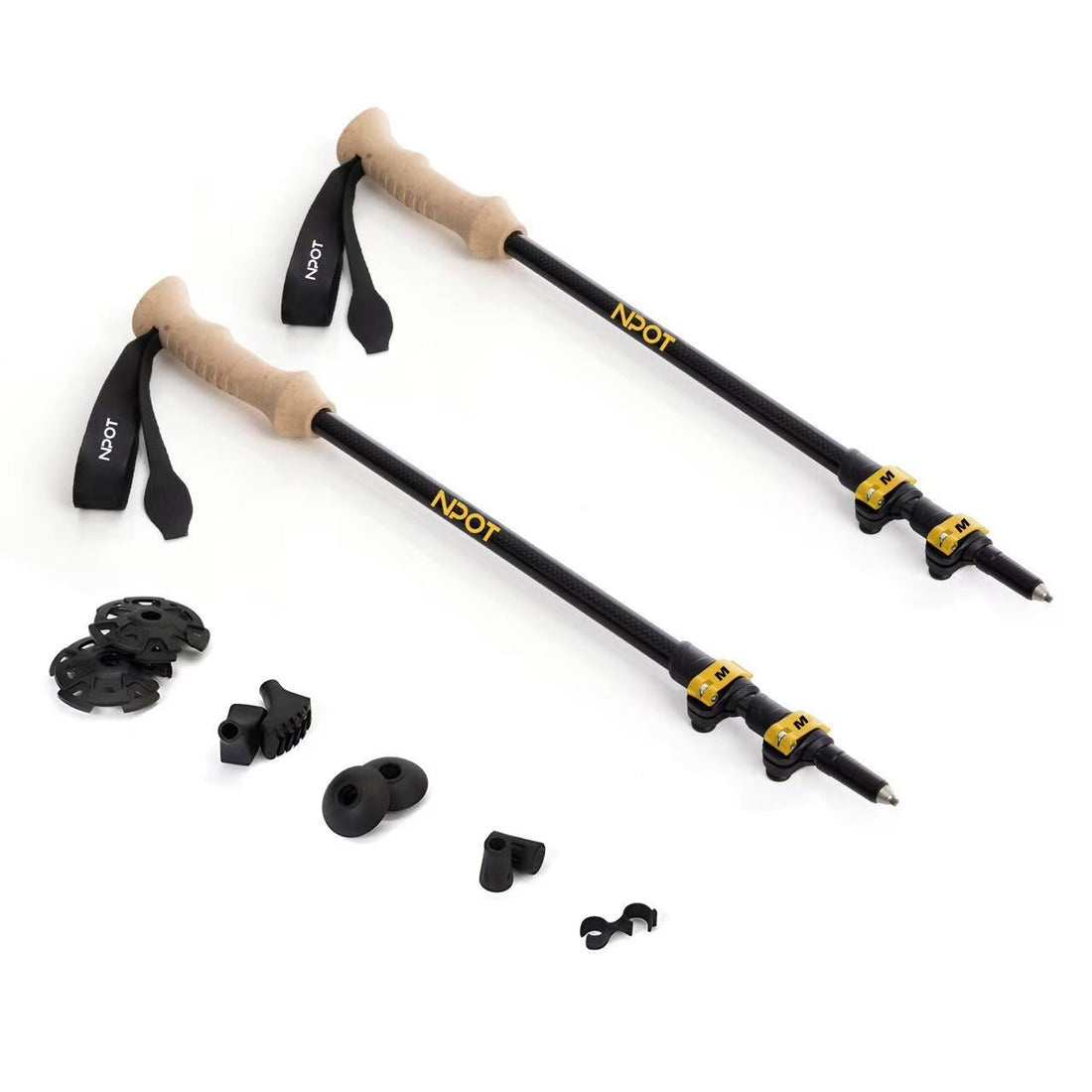
How to Choose the Ultralight Hiking Poles
Share
For hikers and campers, a good pair of ultralight hikinging poles can make a huge difference in comfort, efficiency, and safety on the trail. They help reduce pressure on your knees and legs, improve balance, and keep your rhythm steady on uneven terrain. But with so many models on the market, how do you choose the right lightweight hiking poles?
1. Focus on Weight and Materials
The first thing to look at is material. Most ultralight hiking poles today are made from carbon fiber or 7075 aluminum alloy.
-
Carbon fiber poles are incredibly light and offer excellent shock absorption, making them ideal for long-distance and ultralight backpacking.
-
Aluminum poles, on the other hand, are slightly heavier but more impact-resistant and durable on rocky or mixed terrain.
Generally, poles weighing between 150–200 grams per pole are considered ultralight and suitable for thru-hiking or minimalist setups.
2. Choose the Right Structure
Foldable trekking poles (Z-fold design) are the most compact and travel-friendly, fitting easily into small packs. If you need adjustability for changing terrain, look for flick-lock or quick-lock systems, which allow fast and secure length adjustment. Hikers who frequently switch between steep ascents and descents will appreciate this flexibility.
3. Grip and Wrist Strap Comfort
Comfortable grips are essential for long hikes. Cork grips and EVA foam handles are the most popular options — cork provides a natural feel and absorbs sweat well, while EVA foam offers cushioning and warmth in cold weather. Adjustable and breathable wrist straps help distribute pressure evenly and prevent hand fatigue over long distances.
4. Pay Attention to the Details
Small details can greatly affect performance. Look for tungsten carbide tips for better traction, rubber tip protectors for paved trails, and snow baskets if you plan to hike in winter conditions. These accessories not only improve usability but also extend the lifespan of your hiking poles.
